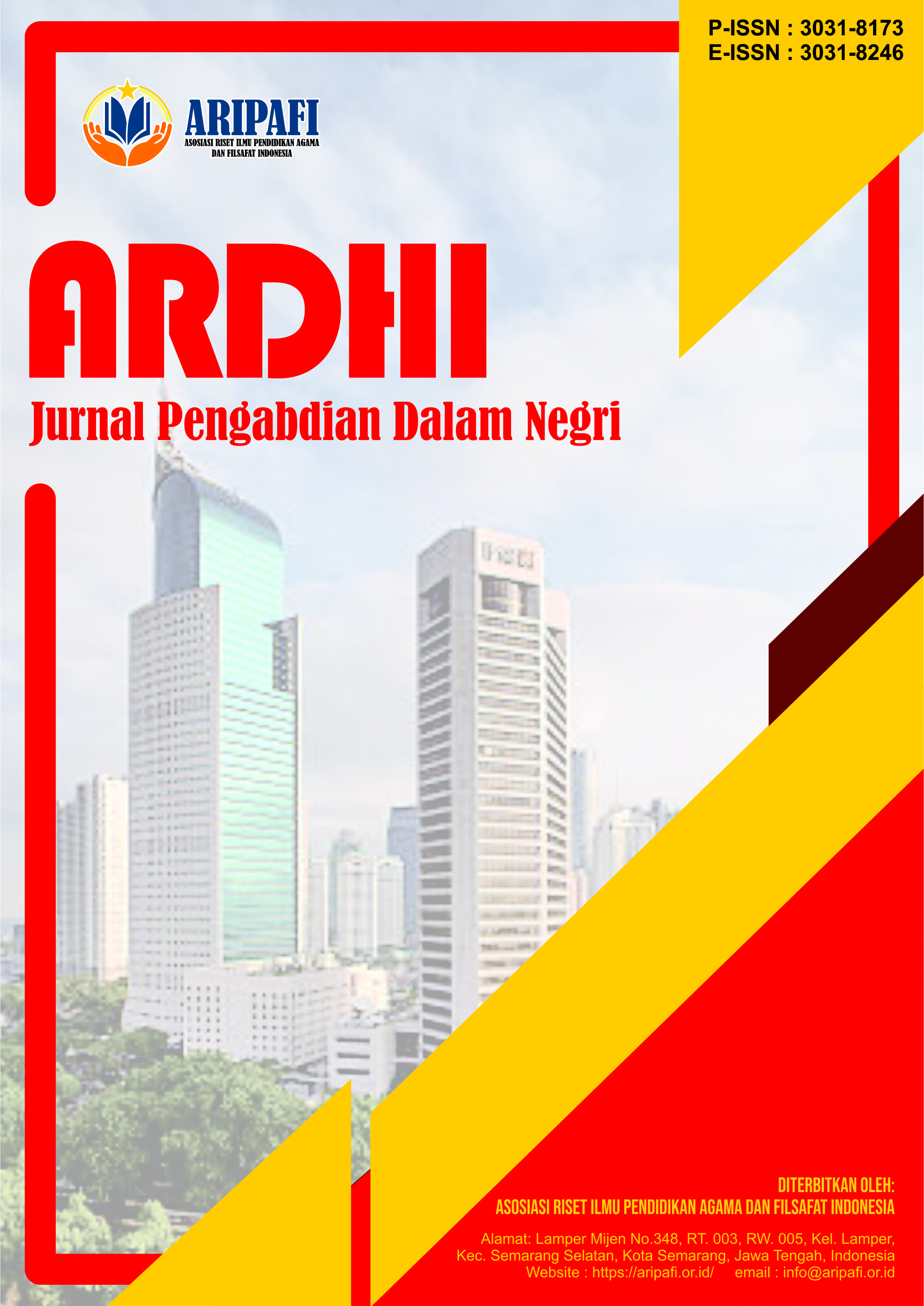Pengelolaan Daur Ulang Sampah Rumah Tangga sebagai Upaya Pemberantasan Sarang Nyamuk (PSN) di Desa Bueng Ceukok, Ingin Jaya, Aceh Besar
DOI:
https://doi.org/10.61132/ardhi.v3i2.1082Keywords:
especially, Dengue Fever, mosquito, nest, eradicationAbstract
Indonesia is a tropical country which of course cannot avoid the occurrence of dengue fever. engue fever is still one of the serious diseases faced in Indonesia. The results of the Ministry of Health of the Republic of Indonesia in 2022, the number of dengue cases reached 131.265. Prevention and eradication measures are more effective by eradicating mosquito larvae with PSN. PSN efforts require cooperation between the government and community participation. The role of eradicating mosquito nests must always be increased, includes draining water reservoirs, tightly closing water reservoirs, reusing used goods that can hold water and have the potential to become breeding grounds for mosquitoes that transmit dengue fever. In general, most residents use water reservoirs and there are piles of rubbish around the house and there are still puddles and water reservoirs. For this reason, there needs to be education for the community about eradicating mosquito nests, one of which is by utilizing used goods so that they do not become a place for the shelter and development of mosquito larvae that cause dengue fever. The method used in this community service is by providing education and counseling to the community regarding explanations regarding waste management, sorting, benefits and recycling of waste. The implementation of this PkM activity went well and smoothly. The community was enthusiastic in participating in this activity. There was an increase in public knowledge and understanding during the discussion session of the activity. It is hoped that the community can manage waste properly and correctly to avoid various diseases, especially Dengue Fever (DBD).
Downloads
References
Arunachalam, N., Tyagi, B. K., Samuel, M., Krishnamoorthi, R., Manavalan, R., Tewari, S. C., Ashokkumar, V., Kroeger, A., Sommerfeld, J., & Petzold, M. (2012). Community-based control of Aedes aegypti by adoption of eco-health methods in Chennai City, India. Pathogens and Global Health, 106(8), 488–496. https://doi.org/10.1179/2047773212Y.0000000052
Depkes RI. (2016). Pencegahan dan Pengendalian Demam Berdarah Dengue di Indonesia. Jakarta: Depkes RI.
Kementerian Kesehatan Republik Indonesia (Kemenkes RI). (2022). Kasus DBD meningkat, Kemenkes galakkan gerakan 1 rumah 1 Jumantik (G1R1J). Retrieved from https://www.kemkes.go.id/article/view/22061600001/kasus-dbd-meningkat-kemenkes-galakkan-gerakan-1-rumah-1-jumantik-g1r1j-.html
Rahmaniar Brahim, dkk. (2010). Demam berdarah dengue di Indonesia 1968 – 2009. Buletin Jendela Epidemiologi, 2, Agustus 2010, Pusat Data dan Surveilans Epidemiologi Kemenkes RI.
Ridha, M. R., dkk. (2013). Hubungan kondisi lingkungan dan kontainer dengan keberadaan jentik nyamuk Aedes aegypti di daerah endemis demam berdarah dengue di Kota Banjarbaru. Jurnal Epidemiologi dan Penyakit Bersumber Binatang, 4(23), 133-137.
Widi, S. (2022). Ada 73.518 kasus demam berdarah dengue di Indonesia pada 2021. Retrieved from https://dataindonesia.id/ragam/detail/ada-73518-kasus-demam-berdarah-dengue-di-indonesia-pada-2021
Downloads
Published
How to Cite
Issue
Section
License
Copyright (c) 2025 ARDHI : Jurnal Pengabdian Dalam Negri

This work is licensed under a Creative Commons Attribution-ShareAlike 4.0 International License.





